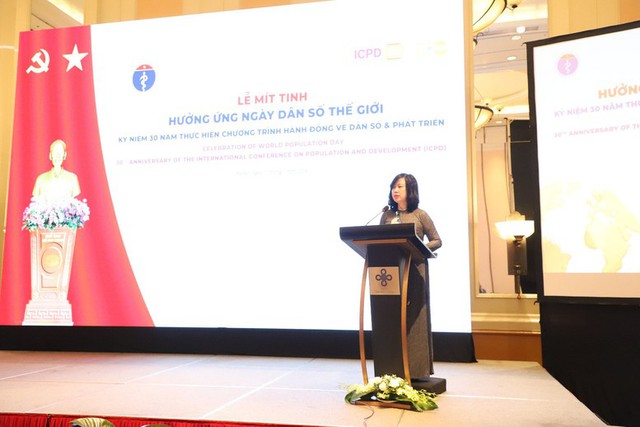Life expectancy in Viet Nam increases rapidly
VGP - The average life expectancy for Vietnamese people is increasing rapidly, from 65.5 years in 1993 to 74.5 years in 2023, considerably high for countries at similar income levels, according to Minister of Health Dao Hong Lan.

Minister of Health Dao Hong Lan at a meeting on celebration of the World Population Day, Ha Noi, July 11, 2024 - Photo: VGP
Minister Dao announced the above information at a meeting held on Thursday to mark the World Population Day.
Dao said Viet Nam has made efforts to address inequality and narrow the gap in socio-economic status between regions and population groups.
According to the minister, the maternal mortality rate has decreased by six times over the past 30 years, from 233 per 100,000 live births in 1990 to about 40 per 100,000 live births in recent years.
Since 1993, the mortality rate among children under one year of age has also decreased from 43.3 to 12.1 per 1,000 live births in 2020.
The nation has successfully controlled the rapid population growth rate, with the annual population growth rate decreasing from 1.7 percent in the 1989-1999 period to 1.14 percent in the 2009-2019 period.
Viet Nam has reached replacement fertility since 2006 and the total fertility rate (TFR) has been maintained at 2-2.1 children per woman throughout the past time.
The population structure is shifting positively towards a sharp increase in the working-age population, from 56.1 percent in 1989 to 67.5 percent in 2023. Viet Nam has entered the "golden population" period since 2007 with a strong labor force.
Population distribution has become more reasonable in the period as the proportion of urban population increased from 20 percent in 1993 to 38.1 percent in 2023./.
